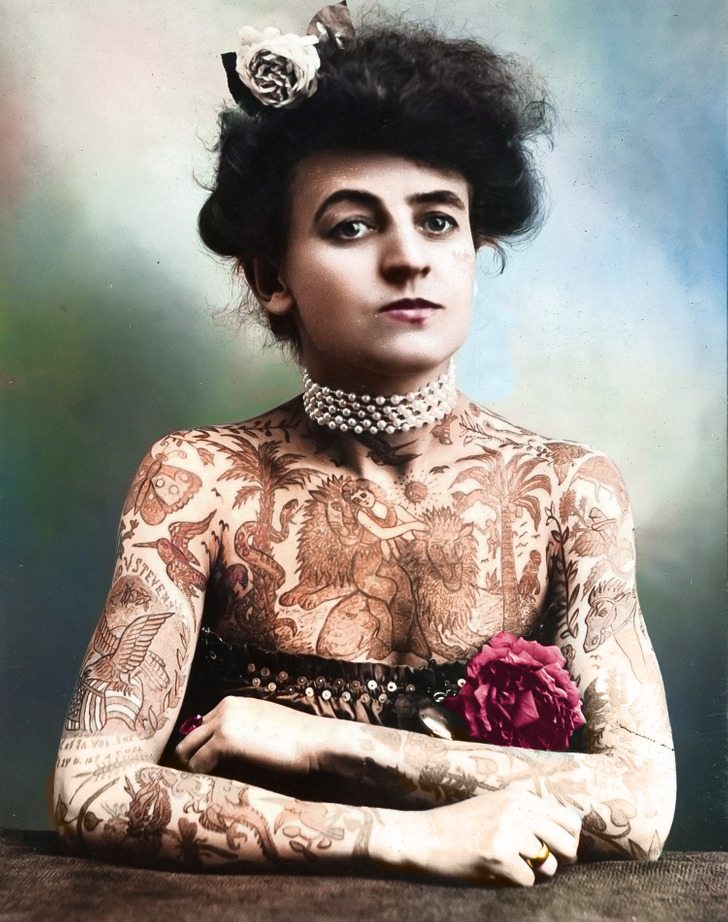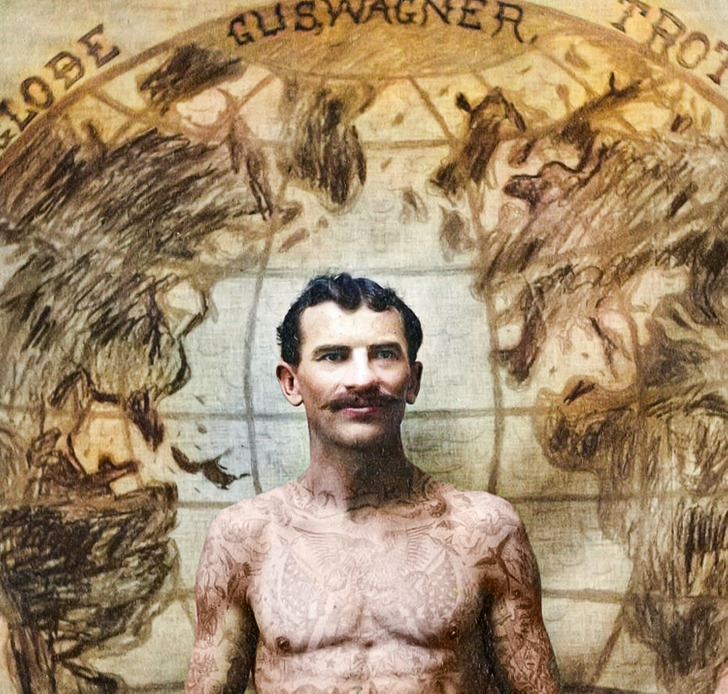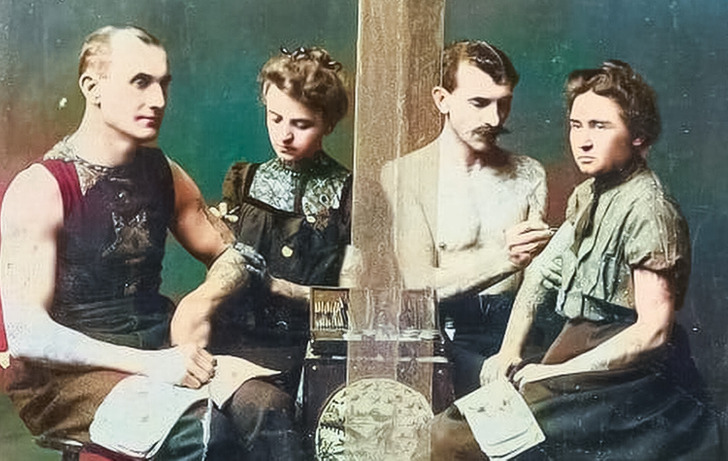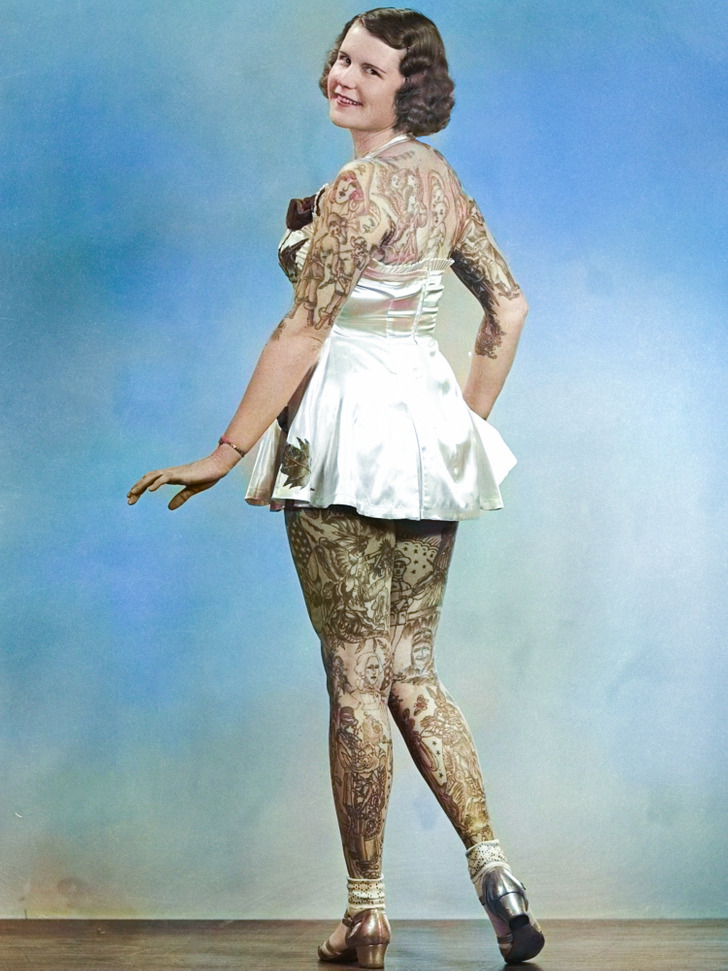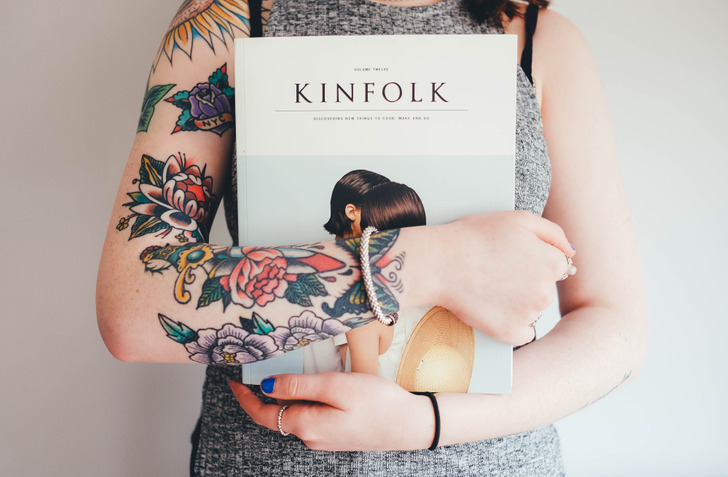The Story of Maud Wagner, the First Female Tattoo Artist That Went Against the Rules of Society and Looked the Way She Liked
Today, when we see a tattoo on a woman’s body, what can surprise us is the plot of the drawing, but not the fact that a woman has it. We’re used to this type of self-expression, but there were times when it was frowned upon. Especially, the tattoos on women, at the beginning of the previous century, that were supposed to wear long skirts and corsets. But even during the times of the strictest rules, there were rebels that followed their hearts, instead of the ever-changing social standards.
We at CHEERY want to tell you the amazing story of Maud Wagner, the first American female tattoo artist, that wasn’t scared of shattering the stereotypes about what a woman was supposed to look like, and spent her life, not caring what others would think.
Maud started her path as an aerialist.
Maud Stevens was born on February 12, 1977, in a small town of Emporia, Kansas. We know almost nothing about her childhood, but in her early youth, she discovered a talent for acrobatics and started performing with numerous traveling circuses.
By the age of 27, she was an experienced acrobat and aerialist. With a traveling group, she was performing around the entire country and attended the Louisiana Purchase Exposition in 1904.
She met her future husband at the exhibition.
The Louisiana Purchase Exposition changed Maud’s life. There, she met Gus Wagner, a tattoo artist that called himself “The most artistically marked up man in America”. The young man asked the charming Maud out, but she wasn’t impressed by him, but by the drawings on his body. Instead of a romantic date, she asked him for a lesson on making tattoos, and she gradually started to decorate her body with drawings.
Tattooed white women were so rare in the US that they would instantly become famous. But many of them had tattoos against their will. For example, American Olive Oatman was raised Mohave Indians, who gave her a traditional tribal tattoo. When she returned home at the age of 19, she became famous right away. Maud covered her body with tattoos willingly.
The tattoos on Maud’s body consisted of trendy drawing of the time. Maud’s tattoos were “typical of the period”, and consisted of “patriotic tattoos” and “tattoos of monkey, butterflies, lions, horses, snakes, trees, women”. Such a body looked very unusual, which is why tattooed women often took part in circus performances.
She was a dedicated student of her husband.
Gus Wagner was born in Marietta, Ohio. In this shipbuilding town, he first saw a tattooed man in a traveling circus show. He liked the idea of traveling and in 1897, he became a merchant seaman. Traveling around the world, he visited Java and Borneo, where he learned to made tattoos with traditional hand-made tools. By 1901, Gus already had 264 drawings on his body. When he returned home, he became a traveling tattoo artist, and he met Maud. Several years after they met, they got married.
Just like her husband, Maud avoided new electric tattoo machines and preferred manual tools. Together, the Wagners became the last tattoo artists to work by hand, without the aid of modern tattoo machines. And Maud herself became the first famous female tattoo artist in the US. She was a good student, and she learned to make tattoos with traditional methods.
She inspired other women to make art.
After leaving the circus, Gus and Maud Wagner traveled around the US. They worked both as tattoo artists and “tattooed attractions” in vaudeville houses, county fairs and amusement arcades. They are credited with bringing tattoo artistry inland, away from the coastal cities and towns where the practice had started.
After Maud, Millie Hull became famous. She was one of the first women that learned to make tattoos without her husband or a loved one. She worked in Bowery, New York, for 2 decades and made tattoos for many women, including those that decided to have their first tattoos.
But Betty Broadbent was the most famous woman after Maud (on the photo). She became one of the most famous and photographed artists of the American circus. Betty made history when she appeared completely tattooed at the 1937 World’s fair in a beauty contest.
She changed our life with her bravery.
When Maud and Gus were still alive, their daughter Loretta learned this art, too. She started learning at the age of 9, and soon, became an artist. So, Maud was not only the first tattoo artist, but also the first woman to teach it to the next generation.
It’s curious that Maud, despite her own experience, didn’t let her husband make a tattoo on their daughter’s body. This resulted in Lovetta being one of very few tattoo artists to have never been tattooed.
Maud Wagner’s influence is incredibly big. By shattering the social stereotypes and decorating her body they way she liked, she made a path for other women to express themselves. The fact that a tattoo on a female body looks totally normal today is definitely her merit.
Do you have tattoos? Tell us the story behind them!
